Whether it be financial, political or social, there’s the potential for any decision we make to be fueled by emotion. In particular, when participating in a high risk, high reward area of the market, like the junior resource sector, it can be lethal to your odds of success.
In my experience, those who can use arithmetic as their primary “truth” are the best at eliminating bias and reducing the amount of emotion contained in an investment. Today, I have for you an interview with a man who uses arithmetic to construct, what I believe, is the most compelling argument for gold that I have ever heard.
This man is Trey Reik, a Senior Portfolio Manager with Sprott USA. Reik is a commentator on gold markets and monetary policy, including policies and actions of global central banks, global conditions for money and credit, and factors affecting supply/demand conditions for gold bullion.
I first heard Reik speak at the 2015 Sprott Natural Resources Symposium in Vancouver, British Columbia. From then on, I’ve always paid attention when I’ve heard or seen the name, ‘Trey Reik;’ there’s a lot you can learn from him, especially when it comes to his commentary on gold.
Without further ado, a conversation with Trey Reik.
Enjoy!
Brian: In my view, we live in a society of paradigms or bias that lock us into thought patterns that keep many of us blind to other alternatives – alternatives that may be more efficient or beneficial.
In reference to financial markets and in particular gold, in your opinion, how does one keep an open mind and see through paradigms and their own inherent bias?
Trey Reik: I think that a lot of what’s been going on, at least in markets since the turn of the millennium, so the 2000s, is that we’ve hit a period in which central banking has become probably the most important variable on the investment landscape, and I would add much more important than it should be. This has really cast a prism or a rose-coloured glasses view of what’s really going on in the world. It has, I think, relieved people and investors from reality, to a great degree.
Let me just back up a teeny bit, and talk about it from the perspective of gold. Number one, I’ve given probably 1,000 presentations about gold over the 15 years in which I have been covering it, and I’ve never once convinced anybody to buy gold. I don’t expect to change people’s views today any more than I did yesterday or last month. Number two, gold’s a funny topic because almost everybody has an opinion, generally unburdened by a real strong command of any relevant underlying fundamentals or facts. Third, gold has more investment queues than any other asset with which I’ve been involved over my career.
Some people think it’s an inflation hedge, some people think it’s a deflation hedge. Some people think gold is a risk-on trade, other people would look at it as a risk-off investment. When we have stress in the financial system, some people would view gold as a safe harbour. Other people would still favour the US dollar, although far fewer than would have made that determination say, in 2008. Given the negative reflexive relationship between the dollar and the US gold price, you could actually have a situation where stress in the financial system has a reflexively negative impact on gold.
Now, I went through all of that because my gold thesis is a little different than most. I don’t really think gold has much to do with CPI-type inflation. The way I would pose this is that if the price of hedonically adjusted hot dogs in Houston goes up, why would you buy gold? I don’t really see a strong connection there. Another way to look at inflation is if the prices of goods and services go up for healthy reasons, like a strengthening economy, I’m not really sure the price of gold should go up any faster than say, thumbtacks. If the inflation is of the monetary sort or variety, then I think gold should logically do a lot better.
Now, over the last 17 years, gold is up in 14 of those 17 years and has amassed a compound annual return since year end 2000 through year end 2017 of just about 9.5%. Actually, 9.65%. Over the same 17 years, the compound annual return of the S&P 500, including reinvestment of dividends was 6.32%. Gold has significantly outperformed the S&P with reinvestment of dividends for 17 years and is up in 14 of the 17. Now, if gold is up in 14 of the 17 years, it proves my point that it’s not related to some of these knee-jerk reactions that get ascribed in the press all the time to gold investors. In other words, we’ve had periods of inflation and periods of deflation over that timeframe. We’ve had round trips in equities and commodities. We’ve had yields on both the short end and the long end, largely falling over the timeframe, but we even had periods like June of ’04 to June of ’06 where the Fed raised rates at 17 consecutive FOMC meetings and quintupled the Fed funds rates from one-percent to five-and-a-quarter-percent, and gold went up during that timeframe by as much as 86%.
My point is, for gold to do as well as it has for so long, posting the best performance of any global asset, there’s obviously something more going on. I think what that is, is that at the margin, we have about $280 trillion now in global financial assets, and each year, in my opinion, my thought experiment, if you will, is that a very small portion of that global wealth seeks a home in hard assets, things that can’t be debased or defaulted upon, things that can’t be printed. That’s why fine art, in my opinion, has done so well over a period that has not exactly been exhibiting breakneck growth, but nonetheless, the art market’s been on fire. Things like Honus Wagner baseball cards, fine Bordeaux wines, all that kind of stuff has done really, really well.
Gold has benefited, I think from that migration. Each year, we have a different rate of migration from the financial asset pile to things like gold, and in certain years, that migration may have even reversed, like 2013, for example. The whole gold thesis is about that rate of migration going from say 1/10th of 1% to say, 1/2 of 1% ’cause 1/2 of 1% of $290 trillion is $1.45 trillion. The available gold stock is about $2.8 trillion. $1.5 trillion isn’t going to get into $2.8 trillion without a serious price dislocation.
When you talk about paradigms or things being misleading or that type of thing, although that’s a leading, almost political kind of question, I think the biggest misdirection, I think, of markets is the degree to which certainly over the past three years especially, but over the last 17 years, how big a part of financial asset valuations has become central bank policy.
Now, to back this up to two weeks ago, I think most of the market still believes that this disturbance that we had is–just as when we had the crisis of 2007, ’08, and ’09—the first words out of people’s mouths are always, “It’s contained.” Just as we thought in 2007 that the disturbance was limited to subprime mortgages, we are currently, I think, a large percentage of folks would say that the current disturbance is limited to a very small group of perhaps leverage, but certainly a short bet on the VIX. I look at it very differently. I would suggest that after nine years of ZIRP and QE, but 17 years of egregious central policy and interventions really starting with Mr. Greenspan, the entire financial system has been imbued with this short-volatility way of looking at the world. I’m sure given your situation, that you’ve read Chris Cole’s stuff from Artemis, but he’s the Michael Burry of this trade. You remember Burry was the guy that figured out the subprime-short trade for Scion Capital in the movie The Big Short. Coles is, I think, the Michael Barry of this trade. If you’ve read his stuff, he estimates that there’s about $2 trillion-worth of short-volatility exposures.
He’s got it all broken out in the stuff that he’s written. If you have about $2 trillion of exposures left, we haven’t even really started to scratch the surface of re-pricing things back to reality. I would say that in an environment of 0% interest rates and QE, we’ve lost the ability to assess the demand for anything.
People who laugh or criticize gold, like Warren Buffett–here’s a guy, he’s got more financial assets, paper assets than any other human being on the planet, or I guess Jeff Bezos might be up there with him now.Warren Buffett, who has more to lose from gold doing well than any other person on the planet, and ask him what he thinks about gold? But yet we do. When we do, he says, “Well, if you take all the gold in the world and you fit it on a tennis court, you got this big lump of gold and then in the other, box B, you could have five General Motors or GEs, and all the farmland in America, and you’d still have a trillion dollars leftover. Who wouldn’t pick box B?” The answer is anybody who thinks box A, which is all the gold in the world, is going to go up faster than box B.
We have a system where people think they have these franchises and these moats and all the stuff that Buffett writes about, and impenetrable franchises, but in fact, the denominator of all of these things, the unit of account, even if you’re talking about cash flow, is dollars. The one thing that is not stable as a unit of account is dollars, so no one really has any idea what the value of any of these franchises are.
If we normalized rates, and we took say, Fed funds to, well what’s normal anymore? We took them from 1% to 5.25% as recently as 2006, but if we took them to 4-5%, and we took the 10-year Treasury yield to eight percent, would the financial systems still be intact? I think the answer is no.
Until we can normalize rates, we don’t know what the list of Buffett’s companies–the Nebraska Furniture Mart and Wells Fargo and he just sold his IBMno one knows what the demand for anything is at these companies with this much monetary debasement.
Brian: Since 2008, I have personally suffered from being too pessimistic on paper currencies, mainly the U.S. dollar and risk in the broader market. Depending on perspective, this view both made me and cost me money.
Now, 10 years later, I have taken time to reflect on my investment choices and believe that bias or the so called “gold bug” in me prevented me from having a clearer picture of what was actually happening in the world.
However, I still believe that there is a price to pay for the massive amounts of money printing and low interest rates we have seen over the last 10 years. To me it is a “when” not “if” question.
My question for you is, has the “when” already occurred in the gold market? Meaning, realistically, should investors view the current gold price around $1300 USD/oz as the payback for the QE and low interest rates, or is the “when” still to come?
Trey Reik: I do believe there is no empirical equation that could generate a gold price that really means anything. The gold price is the reciprocal of your comfort with the financial system, the dollar, and central-bank stewardship. If you’re of the opinion as an investor that those three are fine, gold really serves no purpose. If you are like me, of the opinion that all three of those are deeply in doubt, meaning the value of the US dollar, debt levels, central bank stewardship, etc., then gold is a mandatory investment.
It doesn’t really matter if the price is $1,200 or $2,300, if those three issues are still a problem, you need to have gold in your portfolio. That’s what I was saying earlier; I have three litmus tests for when gold is a mandatory portfolio investment. I was sharing the first with you, which is whether you could normalize rates and then you have to decide what normalizing means. Let’s even call it 3% on Fed funds. I don’t think we can get there without a financial calamity or 6-8% on the 10-year Treasury. If you could normalize rates without big impact, gold’s role may have diminished.
The second litmus test would be if we take the ratio of debt-to-GDP, for the last 100 years the ratio of debt-to-GDP in this country has averaged 140-170%, except for two events. The depression and the Alan Greenspan/Bernanke/Yellen era. In the first example, we had GDP fall 50%, the debt remained constant, so the ratio got up to like 260%. FDR had to devalue the dollar and confiscate gold in the US and make it illegal, for what turned out to be 41 years. In the current environment, which is a numerator event, we’re just piling all this debt on top of relatively stable GDP. If we don’t get that debt-to-GDP ratio back to say, 200% from its current level of about 370%, goldwill remain a mandatory investment.
The reason is, that in order to get that ratio back into balance, the only two options are default or debasement. Each time the markets try to choose default, the Fed steps with QE1, QE2, QE3, Operation Twist, etc., and they will again. We’re either going to have 20 trillion or so of credit in the United States go away, or the other way to look at this is household net worth.
In March of 2009, household net worth, which is the Fed’s measure from Z1; basically it’s stocks, bonds, real estate, minus debt. Household net worth in March of 2009 was $54.79 trillion, GDP was $14.09 trillion. Today, household net worth is $96.94 trillion and GDP is $19.5 trillion. GDP has gone up $5.4 trillion from $14.09 trillion to $19.5 trillion, and household net worth over the same time period has gone up $42 trillion from $54 trillion to $96.94 trillion.
This means that over the past—let’s see, March of ’09, and now we’re in March of ’18, so the past nine years, household net worth has grown 7.77 times, or call it eight times faster than GDP growth. Now, the one thing I know for certain is you can’t grow wealth eight times faster than output forever. Once again, is gold necessary? Have we had the ‘when’ yet? Absolutely not. In the household net worth type of multiple to GDP, if you look at the 40’s, the 50’s, the 60’s, the 70’s, everything really through the 80’s, we used to have about a 3.5 times multiple to GDP and savings, is what household net worth should be.
Probably 30, 35, 40 trillion dollars worth of household net worth has to go away to get the system back in balance. This is like litmus test number two. We either need $20 trillion in credit, or $30-35 trillion in the combination of real estate, stocks, and bonds, (minus debt) to go away to bring the system back in balance. Until that happens, I think gold is a mandatory portfolio component because, once again, the only two options are default or debasement.
Then the third litmus test would be if we could get back to some sort of normalized GDP growth, and once again, we’re debating these days what “normal” is. Trends, capability, normal, say 3%, used to be 3.5%. We used to accomplish 3.5% growth with a savings rate, very importantly, in the 8-10% area. That would be healthy growth. It wouldn’t require the non-financial credit expansion that is now necessary to keep the debt pyramid from toppling, which is on the order of $2 trillion a year. Again, to review the three litmus tests would be normalizing rates without crashing the financial system, rationalizing the excess paper claims in the economy, whether it’s debt or the household net worth, and the third would be normalize GDP supported by savings as opposed to non-financial credit creation.
Unless you have basically all of those, or even two out of three, gold is still a mandatory portfolio investment, in my opinion. Which is, by the way, why even though it never gets any accolades, it is the best performing asset and is up in 14 of the past 17 years. That’s going to continue until we get the system in better balance between claims on future output and the future output itself.
Brian: Is there an event or series of events that would have to occur for you to change your mind about the long-term fundamentals of gold?
Trey Reik: One of the reasons that I’m as confident as I am is I’ve spent more time thinking about the underlying fundamentals than most human beings. There’s a lot of people that invest in gold for lots of different reasons, as we already discussed, but I’m not in that group. I’m investing in gold for a very specific tenant, which has to do with monetary variables and the claim on future output. There’s just too much paper claim out there. Until those imbalances are solved, one way or another, and I’m suggesting the only two solutions are default or debasement, there isn’t any other solution.
Well, the third solution would be we grow into it, but in order to grow into it, even if we had GDP at 10% for each of the next eight quarters, it would take GDP from $19.5 trillion to maybe $22 or $23 trillion, and that can’t support $66 trillion of debt any more than $19.5 trillion. Further, if the variables that I just gave you in the last 17 years hold anywhere remotely true, when we get GDP up to $22 or $24 trillion, the debt won’t have remained constant. It would probably be up seven times faster than the GDP growth. You can’t grow out of it, you’ve got to have default or debasement. These imbalances are so profound that I’m not swayed to change my mind at all, even by periods like September 2011 to December 2015, when the high tick for gold was 1911 down to 1050 because these imbalances are still there.
Over the past 17 years, by the way, people always ask when’s gold gonna do its thing? Or why isn’t it doing better?… My response is always, It’s the best performing asset on the planet for 17 friggin’ years. I’ll be fine if gold keeps performing just like this, you know what I mean?
Brian: Yes, absolutely.
Trey Reik: Now, you mentioned the currency thing. I believe all fiat currencies have become an extension of the US dollar. Currency people have to pick one of the seven or five, or however many you want to say there are. That’s a shell game, and that’s all fine. It has gone on much longer than I would have thought possible. It is amazing that 2008 was 10 years ago, and here we are, but things are starting to change.
People talk a lot about the dollar and this is just an interesting thing, if you take the 10 worst market days in each year and you look at those 10 worst market days, you’d have 50 if you looked at five years. From 2008 to 2012, the 50 days when the DOW dropped at least 100 points, the dollar tended to rally on those days. During those days, dollar index rallied 80% of the time and an average 0.6% on these bad days.
Now, if you look at the next five years, from ’13 to ’17, and we look at the 10 worst days for the DOW, the dollar fell on those 50 days an average of .3 and it only rose 26% of the time. What I’m saying here is we are and, by the way, what happened on those 2,000 point days, I think fiat currencies are starting to fail. That’s a bench-clearing statement, but I think it’s true. We are in the early stages of a potential currency collapse, and so we may be getting “there.”
Brian: In your opinion, is the investment thesis for only gold the same as the thesis for only gold mining companies?
Trey Reik: The thesis is the same, but the deployment or the execution is obviously tricky. Gold is the best performing asset on the planet, as I mentioned, since 2000. Gold equities have had three big runs. The three big runs in gold equities were November 2000 to December 2003, , May 2005 to March 2008 and then November 2008 to September 2011.
Now, ironically, each one of the three was within a month or two of exactly three years. I believe that gold equities provide unparalelled alpha when the faith in US financial assets is being recalibrated. We never want to say stocks could go down, so I’ve come up with that phrase.
If we look at November 17th, 2000, through December 2, ’03, the GDX was up 342%, the S&P was down 22%. The next three year period, the GDX was up 185% and the S&P was up 10%. Then, in the third, it was 309% versus 39.70%. Now, if we compound the advance of the GDX in those three periods, which by the way, is nine years out of the past 16 years, it’s a little over 55% of the time you get a compound performance of 5,081.61%. The coincident performance of the S&P, to the day, was 20.39%, which means that gold equities outperformed the S&P by a factor of 249-to-one in nine of the past 16.5 years.
Now, the problem is the corrections between those advances measured negative 36%, negative 76%, and then after the last advance, negative 86%. If you compound those declines, you get basically 98%. That’s why gold equities in December of 2015 were trading below where they were at the end of the first of those three advances, where they were in December of 2003. The GDM in December of 2003 was at 799 and we got down below, I can’t remember the number, but it was much lower than by the end of ’15. Are they motivated by the same investment thesis? Loosely, but the key with gold equities is, as I think you learned after 2016, neither gold nor gold equities are a permanent investment. They serve different roles.
With what we call the jaws-of- life of the inverse correlation between the S&Ps, since October of 2012 through to today, never having been wider. The last time it was this inversely correlated, gold stocks was like 1996 to 2000, and we all know what was happening then. When people get dumb about US financial assets, gold stocks have a tendency to get left for dead. Then, when the inevitable correction comes, and there were two since 2000. The first was 50.5%, second was 57%. As I’ve proved in the prior example, gold stocks have a tendency to provide among the best alpha available in any asset class.
While I think it’s been necessary to have a good bullion allocation consistently in the last several years, I think that now would be an example of the time period where it’s also incumbent to have a representation in the equities themselves. It’s because of the alpha provided if we have one of these recalibrations of faith in US financial assets, and secondly, simply because of the inverse correlation, which has opened to such an egregious degree between the S&P and gold equities.
Brian: It has been a pleasure Trey, thank you very much for taking the time to answer my questions!
Concluding Remarks
The world’s politicians and a good portion of the mainstream media would have you believe that the actions carried out by the world’s central banks, mainly QE and low interest rates, saved us from the depths of what could have been a much worse situation in 2008. In my opinion, this couldn’t be further from the truth. While, it has taken longer than I have expected, there will be a price to pay for this poor monetary policy and, unfortunately, for those who are blissfully unaware, they will be rudely awakened, one day, when the market re-adjusts.
In my discussion with Reik, he cited three Litmus tests which can be used to gauge whether gold is currently a mandatory investment within your portfolio. Ask yourself:
- First, is it possible to normalize interest rates?
- Second, can the debt to GDP ratio be reduced back to historical norms?
- Third, is it possible to get back to normalized GDP growth?
If you can honestly answer even one of these questions with a ‘yes,’ first, I’m surprised and, second, maybe gold isn’t a good investment choice for you. In my mind, Reik presents a compelling thesis for the investment in gold and gold equities, making it a “when” not “if” investment choice for your portfolio.
For those interested in purchasing the physical metal, yet would prefer the convenience of purchasing it through the stock market, I highly suggest checking out the Sprott Physical Gold Trust, which is traded on the NYSE under the ticker PHYS, or the Sprott Physical Gold and Silver Trust on the TSX under the ticker CEF.
The Sprott Trusts offer a few advantages. First, they differ from bullion funds, in that all of the bullion owned by the trusts is held in the trusts’ allocated accounts in physical form. Second, all of the Trusts’ bullion is stored at the Royal Canadian Mint, a Federal Crown Corporation of the Government of Canada. Thirdly, for U.S. non-corporate investors who hold units for more than one year and make a timely Qualified Election Form submission, gains realized on the sale of the Trust’s units are currently taxed at the long-term capital gains rate versus the maximum applied to most precious metals ETFs and physical gold coins.
Additionally, I highly suggest following Reik’s market commentary by subscribing to Sprott’s Thoughts, one of the best sources of financial commentary in the resource sector. Also, I highly suggest attending the Sprott Natural Resource Symposium in July, where you will be able to see and listen to Reik in person, along with a fantastic group of speakers which includes Rick Rule, Doug Casey, and James Grant, to just name a few. I hope to see you there!
Don’t want to miss a new investment idea, interview or financial product review? Become a Junior Stock Review VIP now – it’s FREE!
Until next time,
Brian Leni P.Eng
Founder – Junior Stock Review
Disclaimer: The following is not an investment recommendation, it is an investment idea. I am not a certified investment professional, nor do I know you and your individual investment needs. Please perform your own due diligence to decide whether this is a company(s) and sector that is best suited for your personal investment criteria. Junior Stock Review does not guarantee the accuracy of any of the analytics used in this report.
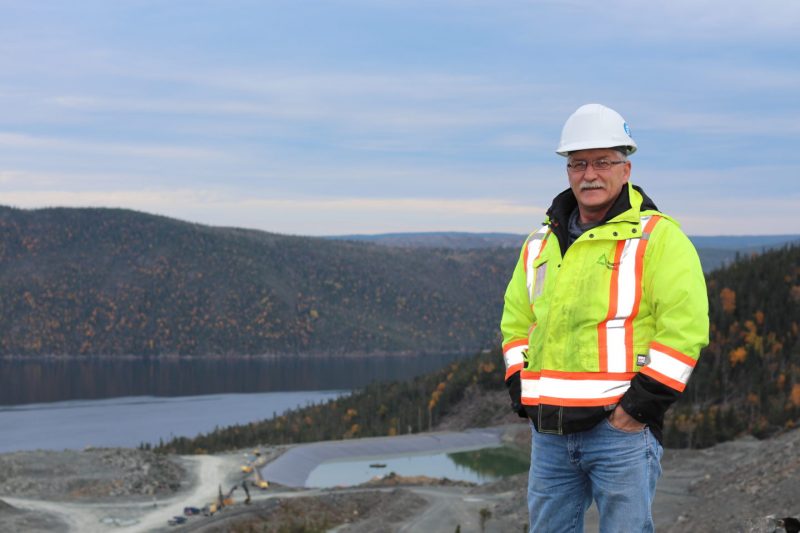
If you’re looking to take your due diligence process to the next level, you have to incorporate a site visit into your repertoire. All the analysis in the world can’t replace the effectiveness of seeing a project and meeting the people in person.
Not only can you confirm what the management team is telling you, but you can meet the people who are on the front lines, mining underground, driving loaders, collecting soil samples or simply answering the phone in the office. All of this can tell you a lot about the health of a company and how it treats its employees, which is paramount to the company’s success, in my opinion.
In October, I had the opportunity to visit Anaconda Mining’s Point Rousse Project, and was not surprised to see that Anaconda’s leadership makes it a priority to empower their workforce. For this, they’re paid back through a motivated workforce.
I returned from my visit to Newfoundland and Labrador very satisfied that Anaconda’s operational team has the right ingredients for success; they look set to put the Stog’er Tight Deposit into production, produce a maiden resource estimate for the Argyle Zone, and explore and develop the Goldboro Project toward production.
2018 looks to be a monumental year of growth for Anaconda, one that I look forward to as a shareholder!
Anaconda Mining – Site Visit October 2017
On the morning of October 22nd, I flew out of Toronto’s Pearson International Airport on my way to Deer Lake, located in western Newfoundland and Labrador. While I was here, I had the opportunity to visit Anaconda Mining’s Point Rousee Project, located on the Baie Verte Peninsula in north western Newfoundland and Labrador.
Gros Morne National Park – Western Brook Trail
The western portion of the island of Newfoundland, while sparsly populated, possesses, in my opinion, some of Canada’s most spectacular scenery and destinations. I landed in Deer Lake, an interesting town because it’s home to western Newfoundland and Labrador’s major airport, and compared to many of the other areas in this part of the island, it’s also well developed on a commerical level.
Most importantly, however, it’s the largest centre next to Gros Morne National Park, and acts as a jumping point for people looking to explore this UNESCO world heritage site.
On the last day of my trip, I spent the day hiking a few of the trails in Gros Morne and was amazed by the scenery – this is a place you will want to add to your bucket list, you won’t be disappointed!
Baie Verte, Newfoundland and Labrador
Baie Verte – HWY 410 thru the main part of town
Baie Verte – A view from Bistro on the Bay
Baie Verte is a small town located on the coast of the Baie Verte Peninsula. Baie Verte’s history as a town is rooted in the pulp and paper industry, but owes its major growth to the asbestos mine which was founded in 1955 by George McNaughton and Norman Peters.
Asbestos Open Pit Mine – 1963 to 1995
The open pit asbestos mining operation, which is located a short drive north of Baie Verte, employed 500 people at its peak. The mine was operated by a number of companies throughout its history, including Advocate Mines Ltd., Baie Verte Mines Inc., and Teranova. The mine was closed permanently in 1995.
While there are other employers in this region of Newfoundland, I definitely got the feeling from speaking to a few of the residents that, outside of being employed by government, mining was the most desirable industry in which to work.
The mining operations that are closest to Baie Verte are Anaconda Mining’s Point Rousse Project and Rambler Metals and Mining’s Ming Mine and Nugget Pond Mill. The two companies, in total, employ roughly 400 people in the surrounding area.
Depending on your speed, it’s roughly a 2 hour drive from the Deer Lake airport to Baie Verte. I spent two days in Baie Verte, staying at the Dorset Inn, which is right in the heart of town. From here, Anaconda’s Point Rousse Project is about a 30 minute drive on the 418, which leads to the town of Ming’s Bight.
The Point Rousse Project
The Point Rousse Project is a collection of Anaconda’s Newfoundland assets, which include the Pine Cove Mine and Mill, the Stog’er Tight Deposit, the Aggregates Project and over 5,800 ha of prospective property.
The Point Rousse Project is located down a very well kept gravel road, about 5 km off the 418. The road makes its way through the forest, up and down hills, until reaching the site’s main offices to your left, and tailings pond to your right. Elevation-wise, the main offices, mill and tailings pond are set roughly 75 to 100 ft above the top of the Pine Cove open pit, and probably another 75 to 100 ft above the sea level at the Port Facility.
During my visit, I was accompanied by the Mine and Mill Superintendent, Tony Chislett. Chislett has been with Anaconda for 10 years, working in a few different roles before becoming Superintendent. In my experience, the best operation managers typically work their way up to the position after having extensive experience in the various jobs that they are going to manage. This not only gives them the much needed knowledge of the process, but also the respect of the workers.
Chislett and his team will be put to the test in the coming months with the conversion of the Pine Cove open pit mine to a long term tailings facility and the start up of the Stog’er Tight Mine, which should occur in early 2018. Not only this, but on the horizon there is the possible processing of the Goldboro ore, which will be an extra wrinkle for the team to deal with, as the Goldboro ore is different from what is mined along the Scrape Trend.
Pine Cove Mine and Mill Superintendent, Tony Chislett
As we drove around the property, Chislett gave me a break down of the operation, and how they have incorporated cutting-edge technology and their personnel’s input to improve the process. For instance, GPS targeting for blasting and on the company’s heavy equipment allows for precision mining and the ability to maximize efficiency with the flow of ore to and from the open pit to the mill. With the movement to Stog’er Tight getting closer, these technologies, I believe, will aid Anaconda in avoiding some of the pitfalls that could accompany the mining operation’s move.
Pine Cove Open Pit Mine– Dump Truck Driving Up the Ramp
Pine Cove Open Pit Mine – Mining of Gold Ore from the Bottom of the Pit
Stog’er Tight Deposit – Located in Close Proximity to the Pine Cove Mill
Scrape Trend
While the Stog’er Tight Deposit looks to become Anaconda’s next producing asset, there are many more prospective targets located in what is called the Scrape Trend.
In the image above, you can see the exploration targets listed from 1 to 4. Starting on the left-hand side of the image with #1, is Anaroc, which is located in close proximity to the Pine Cove open pit mine. Next, #4 is Corkscrew Road, followed by the #2 Connector and, finally, #3 the most explored of the targets, the Argyle Zone.
Argyle Zone
Fifty-two holes have been drilled at the Argyle Zone, totalling 4,860 meters. The strike length is over 600m and 225m down dip. To date, here are some of the drill highlights at the Argyle Zone: 6.09 g/t over 8.9m (AE-16-11), 9.31 g/t over 6.0m (AE-16-39) and 3.63 g/t over 12.0m (AE-17-46).
In a recent news release, Anaconda announced a flotation recovery of 97.3% and a leach recovery of 94.5% for a combined recovery of 91.9% of a 25 kg sample of blended core samples from Argyle, with an average grade of 2.69 g/ton gold.
Additionally, Anaconda’s geologists have identified other targets to the south and along strike using geophysical data.
Source: Anaconda Mining
PUSH: A maiden resource estimation for the Argyle Zone is expected to be announced in December 2017. Additionally, Anaconda’s team is working on an environmental assessment application, conducting metallurgical and ARD testing and government consultations.
Aggregates Project
Deep Sea Port which Facilitates the Aggregate Shipments
While not a focus for Anaconda, the cash and the removal of waste rock that the Aggregates Project provides is a huge plus for the company. The Aggregates Project and the proposed use of some of the larger waste rock as armour stone is a testament to the innovation that Anaconda’s leadership has instilled in their workforce.
With the first Aggregates Project contract having just expired, Chislett mentioned that they intend to negotiate additional contracts in the future. In the last fiscal year ending on May 31 2017, the project generated $0.9 million.
The Goldboro Project
From the first time we met, Anaconda’s CEO, Dustin Angelo, has told me that Anaconda has lofty goals for expansion, as they intend on becoming a 50,000 ounce per year gold producer. To more than triple their current production rate, they will, without a doubt, lean heavily on their latest acquisition, the Goldboro Project, which is located a couple of hours northeast of Halifax, Nova Scotia.
In recent news, Anaconda was able to raise $3 million dollars in a non-brokered private placement. VP of Exploration, Paul McNeill, says roughly half will be put toward further exploration and development at Goldboro.
In a news release on November 1st, Anaconda announced a 6,000m diamond drill program, focusing on the Boston Richardson and East Goldbrook gold systems. The goal of the program is to expand the mineral resource along strike and down plunge, while also completing infill drilling in specific portions of the deposit as they look to move some of the Inferred resource up to the Measured and Indicated categories.
Goldboro IP Chargeability Map
In the same release, Anaconda reported that initial drill core observations support the thesis that the Goldboro Deposit continues at depth, as the first diamond drill hole (BR-17-06) intersected the geological structure hosting the Boston Richardson System between 400 to 475 meters, which is 75 meters below the current resource model.
Goldboro Deposit Vertical Longitudinal Section
PUSH: Drill results from the recently commenced 6,000m diamond drill program. Expansion of the resource at depth and along strike has the potential to do great things for the economics of this project. Pay close attention to drill results coming in the weeks and months ahead.
PUSH: Additionally, a PEA is scheduled to be completed by the end of this year, the economics of which could be enhanced with further expansion of the Goldboro Deposit.
Anaconda possesses a proven team with a track record for success in mining. I believe that Goldboro will be the next feather in their cap, as they look to develop the Project into a producing mine. For a detailed look at Anaconda, check out my last article here.
Concluding Remarks
Before my visit, I felt the future was very bright for Anaconda. After seeing their Point Rousse Project in person, I’m convinced Anaconda is a company that is dedicated to empowering its people. It has not only survived the depths of the recent bear market, but has emerged in this new gold bull market as a premier gold producer, set to grow in the coming years.
I’m looking to add to my position in Anaconda in the weeks ahead, and see weakness in the share price as an opportunity. Putting it all together, there’s a lot of news flow to watch for in the coming weeks and months, which could provide some PUSH for the stock price:
- Results from the 6,000m diamond drill program at the Goldboro Project. They are looking to expand along strike and at depth.
- Completion of a PEA on the Goldboro Project by the end of 2017
- Stog’er Tight Deposit will begin production in early 2018
- Maiden Resource Estimation announcement on the Argyle Zone in December 2017
Don’t want to miss a new investment idea, interview or financial product review? Become a Junior Stock Review VIP now – it’s FREE!
Until next time,
Brian Leni P.Eng
Founder – Junior Stock Review
Disclaimer: The following is not an investment recommendation, it is an investment idea. I am not a certified investment professional, nor do I know you and your individual investment needs. Please perform your own due diligence to decide whether this is a company(s) and sector that is best suited for your personal investment criteria. Junior Stock Review does not guarantee the accuracy of any of the analytics used in this report. I do own Anaconda Mining Inc. shares. Anaconda Mining Inc. is a Sponsor of Junior Stock Review.
If you would like to receive our free newsletter via email, simply enter your email address below & click subscribe.
CONNECT WITH US
Tweets
Tweet with hash tag #miningfeeds or @miningfeeds and your tweets will be displayed across this site.
MOST ACTIVE MINING STOCKS
Daily Gainers
 New Age Exploration Limited New Age Exploration Limited |
NAE.AX | +33.33% |
        |
CASA.V | +30.00% |
    |
VKA.AX | +28.57% |
    |
CTO.AX | +25.00% |
        |
BSX.TO | +22.22% |
        |
ANK.V | +21.74% |
        |
SRI.V | +20.00% |
        |
NEV.V | +20.00% |
        |
IB.V | +18.18% |
        |
SLL.V | +16.42% |




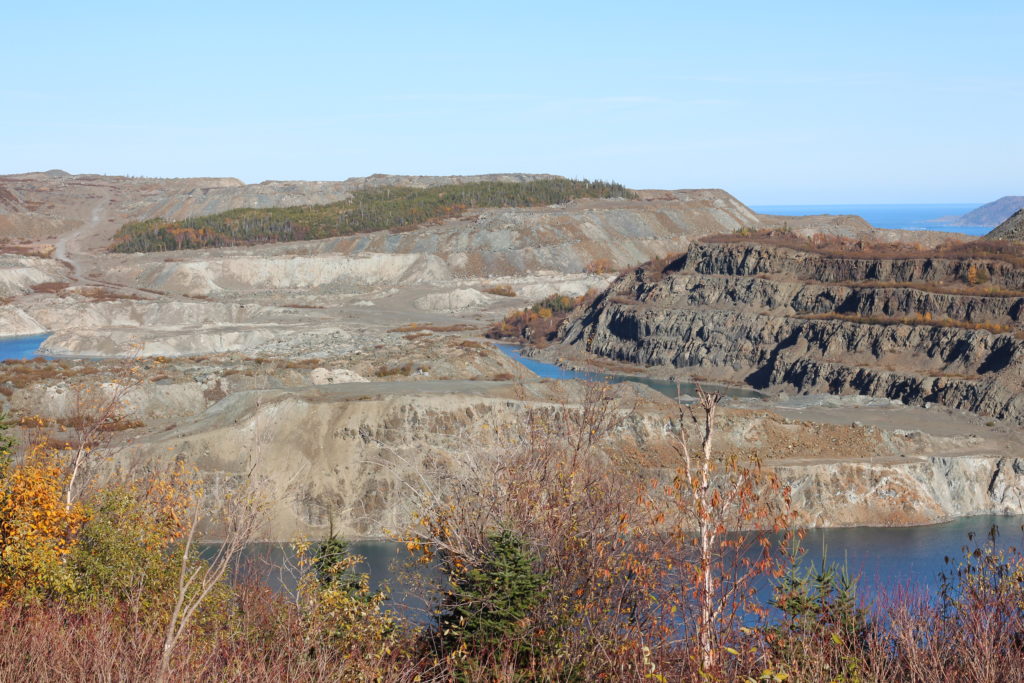
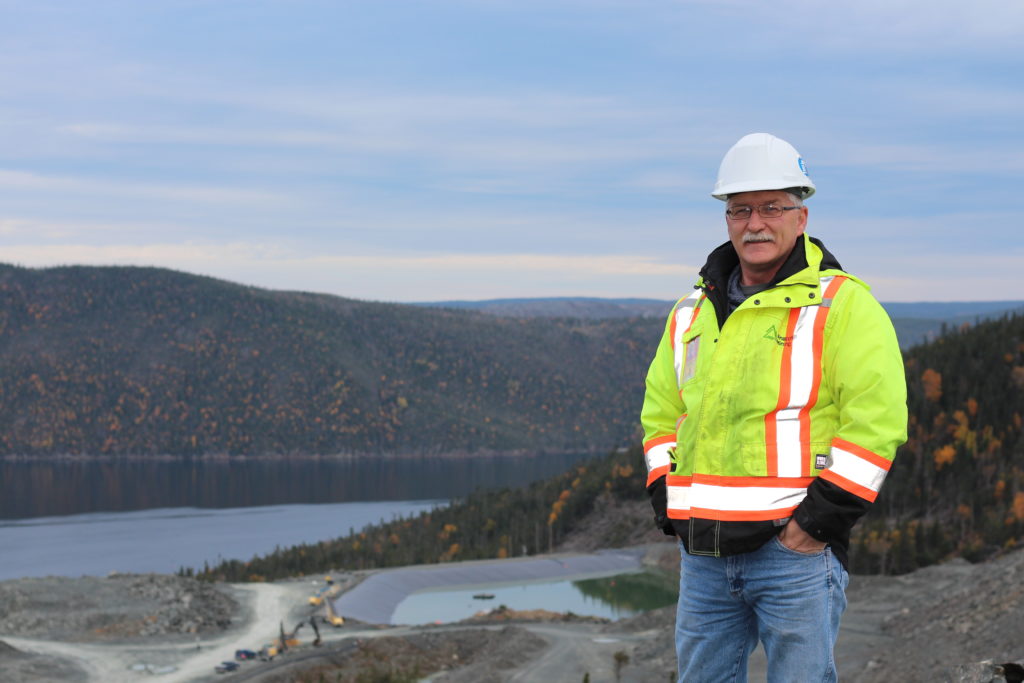
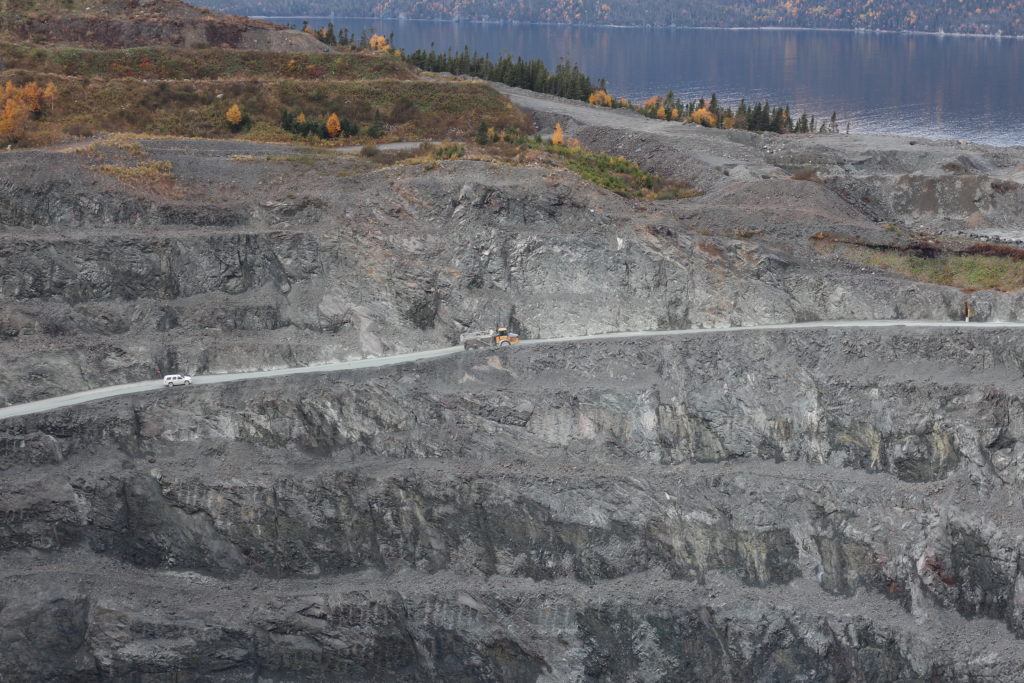
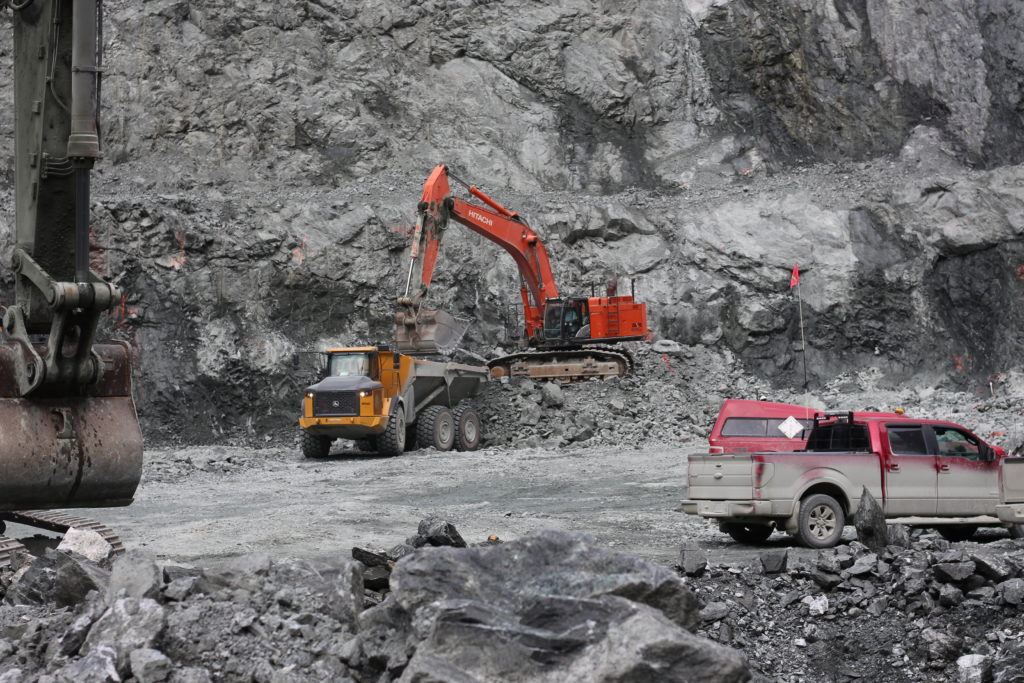
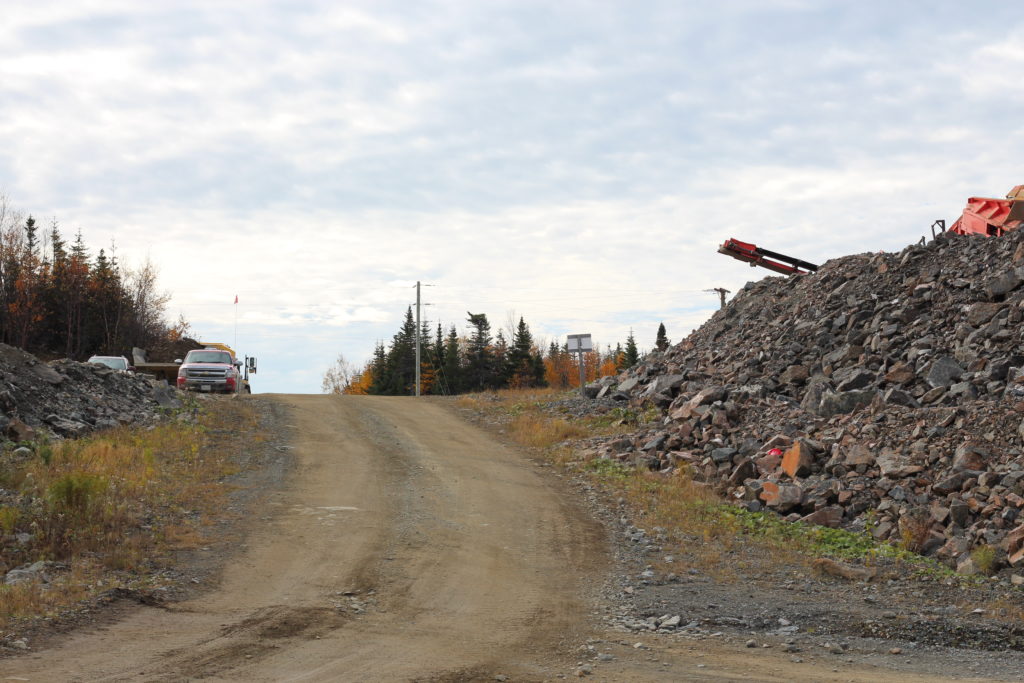
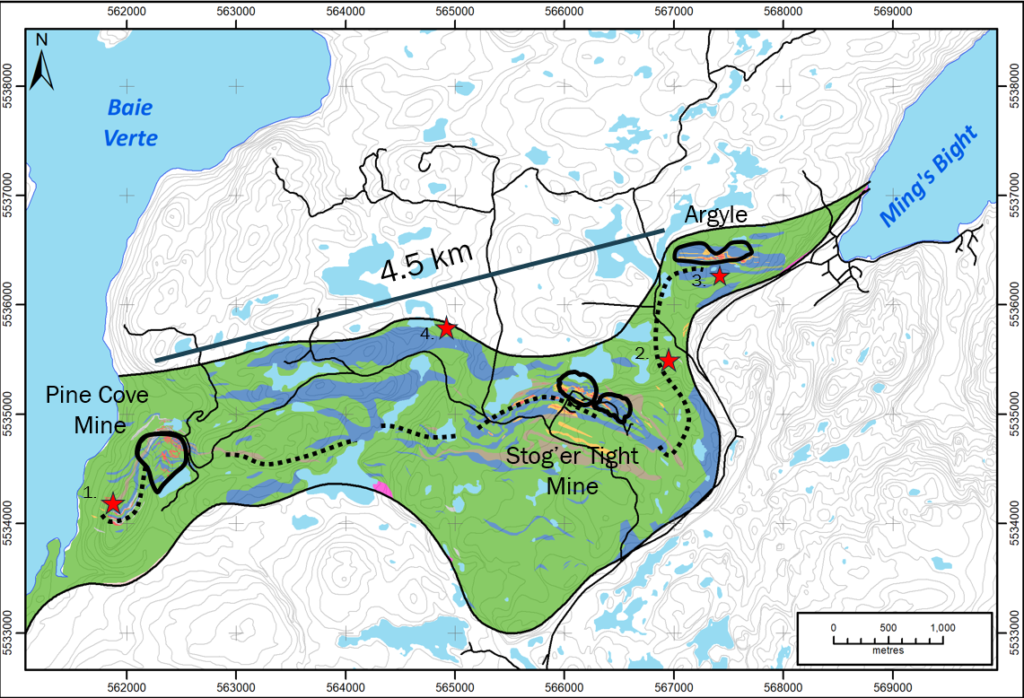
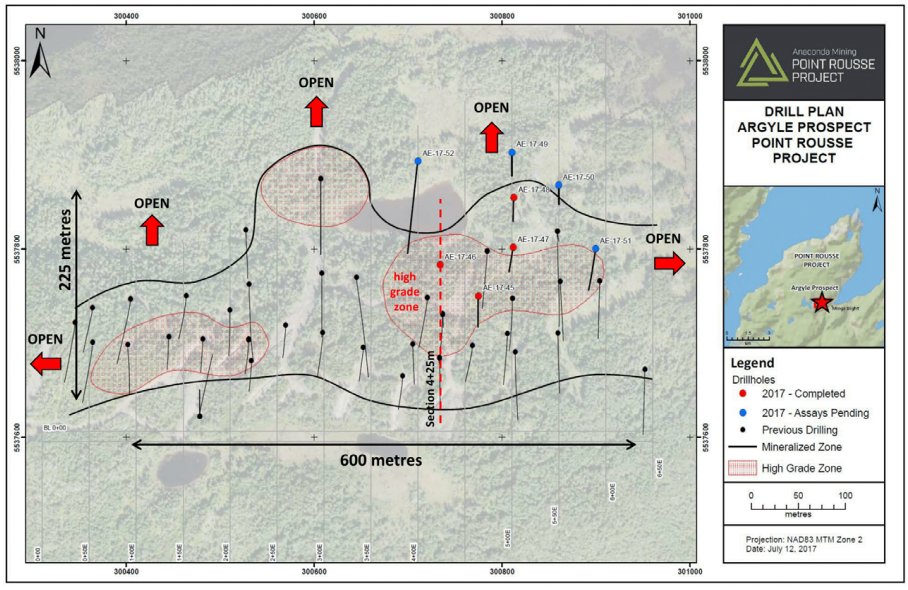
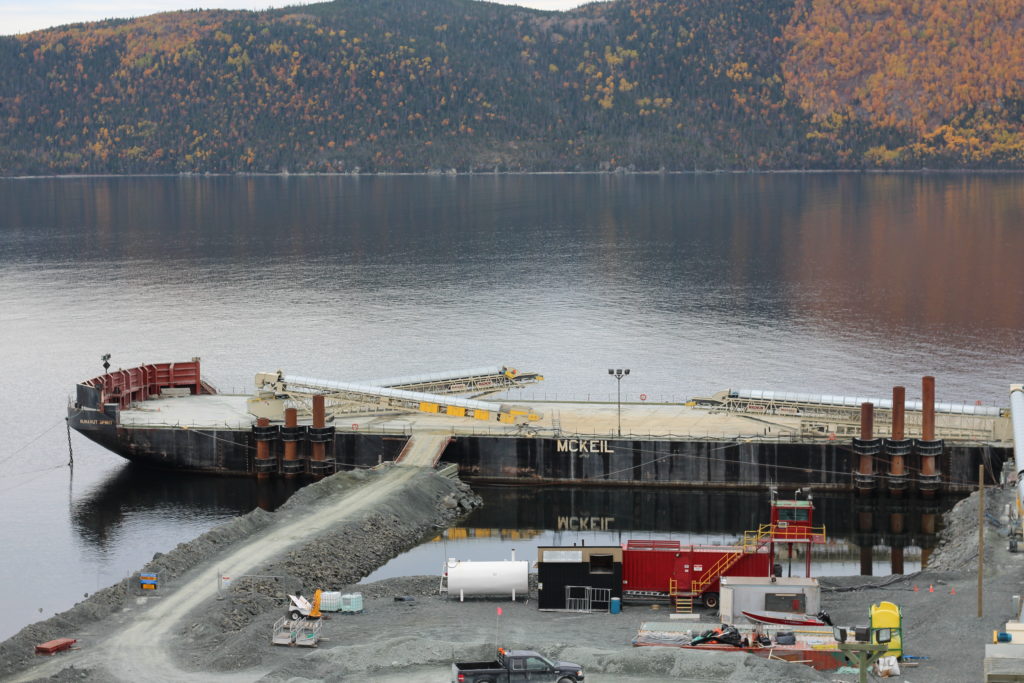
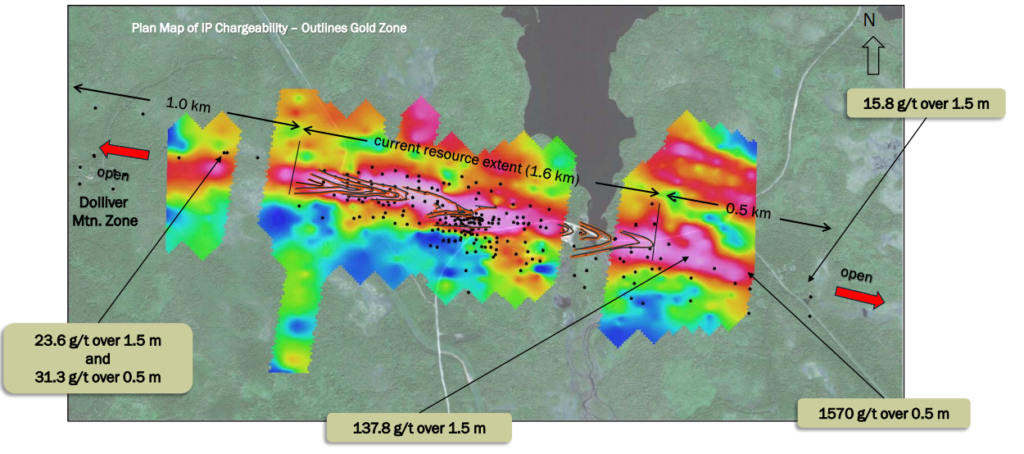
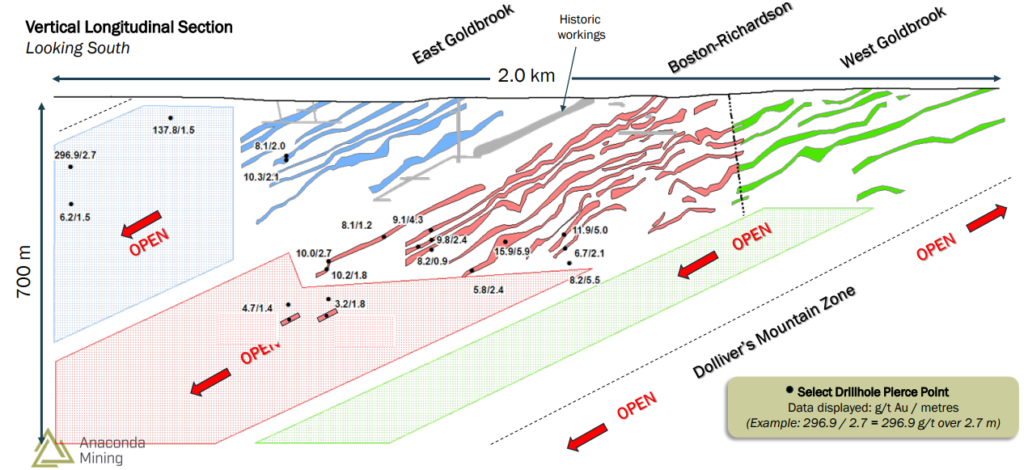
 Follow us on Twitter
Follow us on Twitter Become our facebook fan
Become our facebook fan







